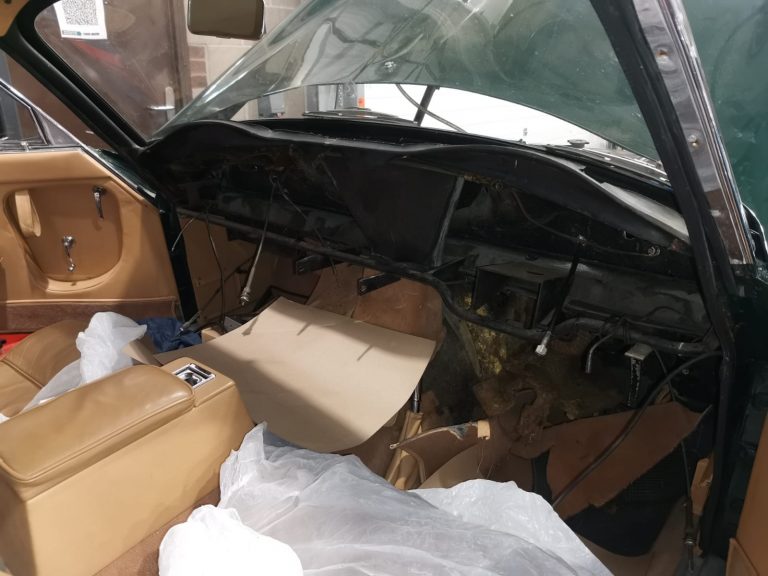
And So It Begins – Stripping Down the 1962 Jensen 541S
The 1962 Jensen 541S that is currently in at Bridge Classic Cars for some work has been handed over to our technician Tom to begin


The 1962 Jensen 541S that is currently in at Bridge Classic Cars for some work has been handed over to our technician Tom to begin

In the late 1980s, the Porsche 959 reigned as the technological supreme. A tour de force of engineering and technology proved that Porsche was at
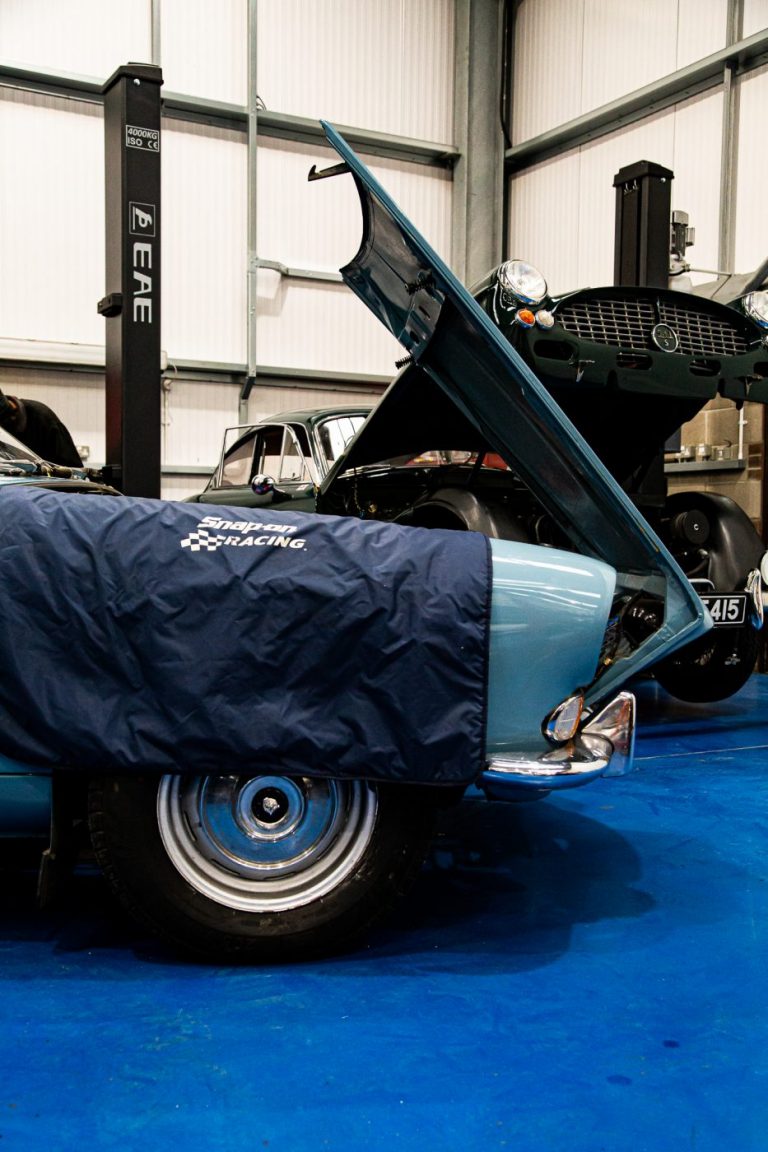
The cylinder head for the 1971 Jaguar XJ6 is back at the Bridge Classic Cars workshop. This has been away at a local specialist to
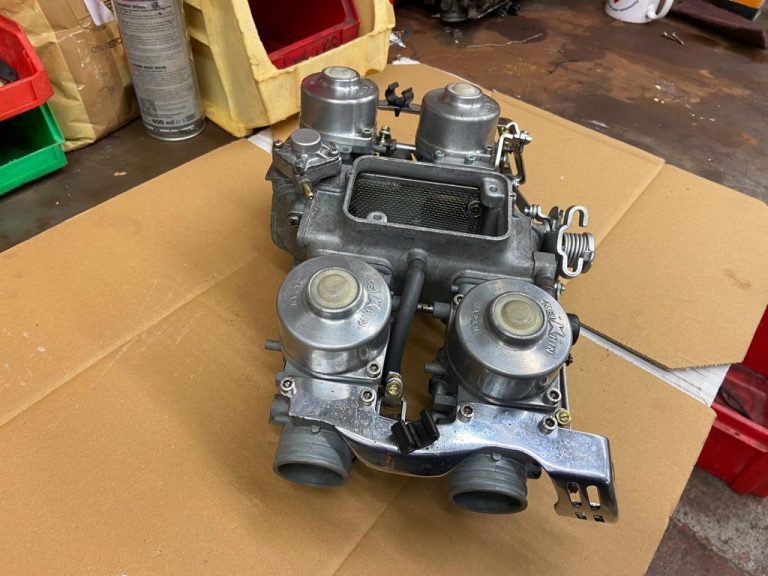
The carburettors for Gordon, our directors, 1977 Honda GL1000 Goldwing are back from blasting and have been freshly rebuilt. These are over at Chris Self
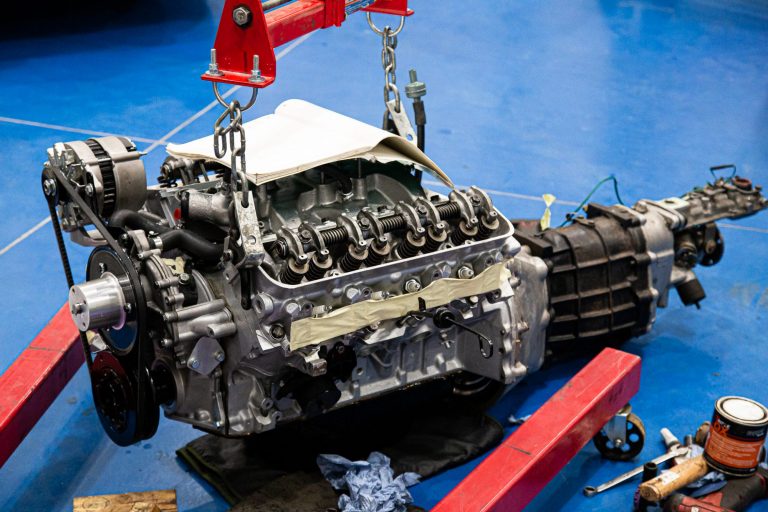
Jonn, one of our in-house restoration technicians here at Bridge Classic Cars, has been busy preparing both the car and the engine for the pair
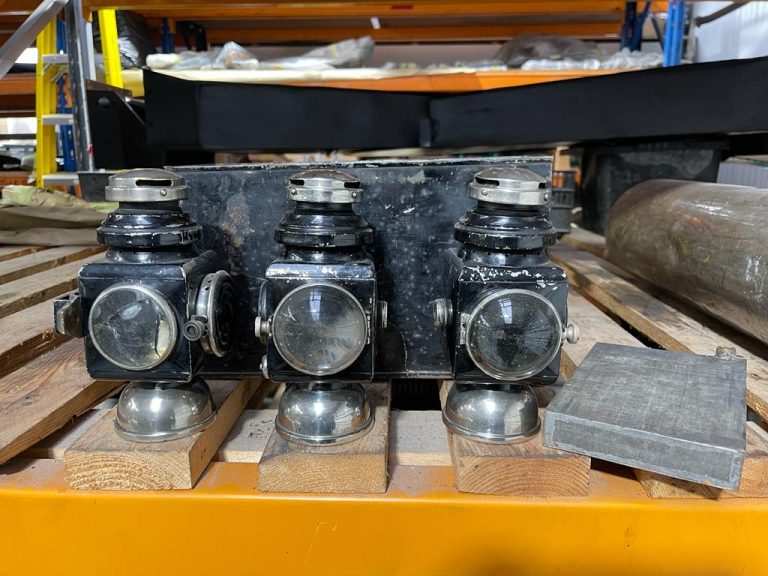
Bridge Classic Cars have the honour of being the current caretakers of the incredible 1905 Riley 9HP believed to be one of only three remaining
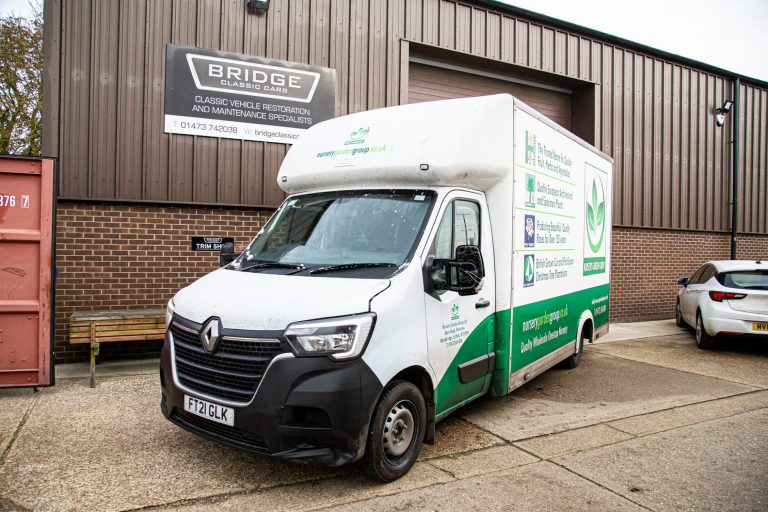
Unfortunately, this 2021 Renault Master has had a bit of damage to the front end. The van belongs to our neighbour here at Pettistree, Suffolk
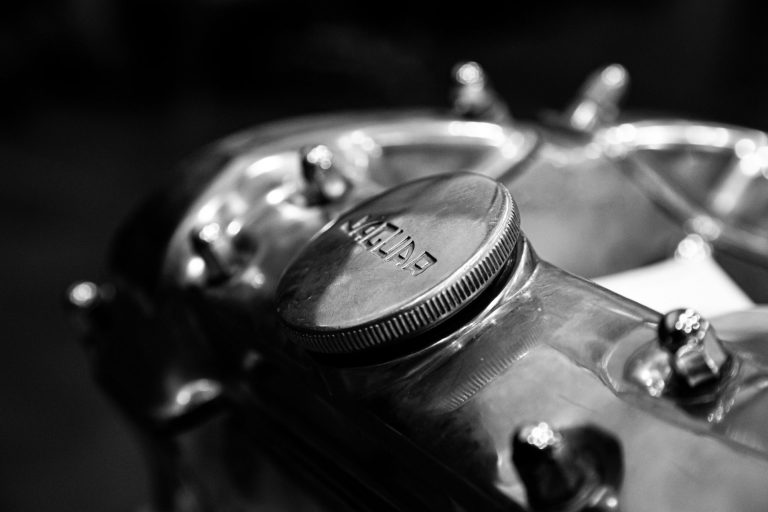
Jaguar. A legendary name in both performance and luxury. Just the name is enough to conjure images of elegant, long-legged coupes and saloons powered by
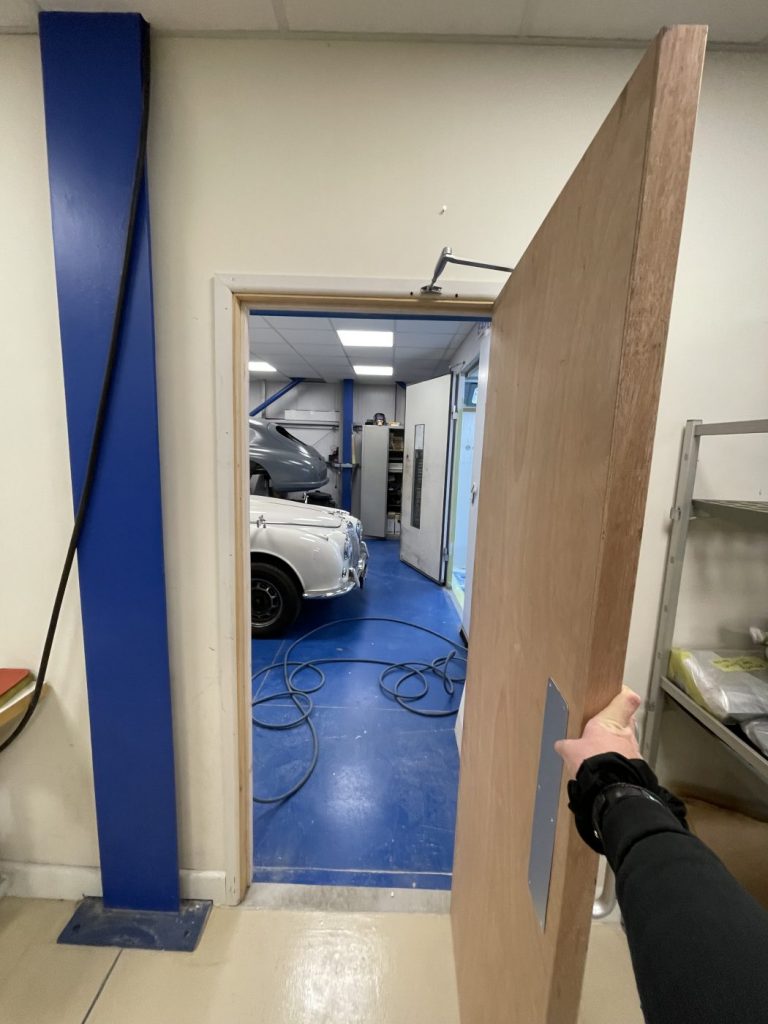
Over the coming weeks and months, there are some changes beginning to happen at the Bridge Classic Cars workshop in Pettistree, Suffolk. Apart from our
The 1962 Jensen 541S that is currently in at Bridge Classic Cars for some work has been handed over to our technician Tom to begin preparing the car for its new components.
The first job for Tom is to strip the original wiring harness out of the car as we have ordered an entire new loom for the car to make sure all the electrical system works absolutely spot on. A key point for all classic cars. With such a handbuilt car, Tom has had to almost trace every wire individually from front to back in order to make sure everything is removed and safe. After this, each part of the harness is catalogued and stored just in case.
Next, Tom has removed the steering column which is due to be replaced on this particular car. For that Tom had to carefully remove the entire dash to gain access to the gear linkage which is controlled via the column. With everything disconnected and the dash out of the car, Tom could begin to also catalogue and assess each individual component.
There will be more happening on the 1962 Jensen 541S very soon so keep an eye out on the Bridge Classic Cars news page for more.
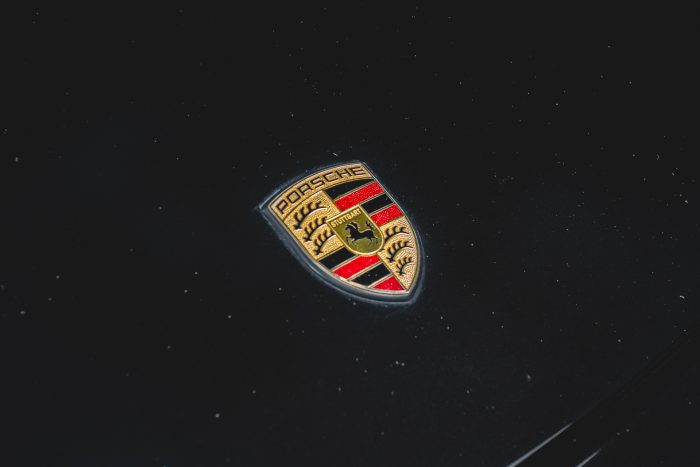
In the late 1980s, the Porsche 959 reigned as the technological supreme. A tour de force of engineering and technology proved that Porsche was at the leading edge of sports cars yet again.
There was one issue with the 959 however. It was massively expensive and outrageously complicated. So, with that, Porsche engineers decided to explore the idea of a simplified 959… That is where the Porsche L7 prototype comes in. A leftover of the original 959 Prototype phase. But internally amongst its engineers, it was known by a different name, The Black Bomber.
The Black Bomber would use a prototype 959 body. But apart from that, all manner of things were entirely redone. Mainly, the engine. The 959 was powered by a twin-turbo flat 6 and connected to an electronically controlled 4 wheel drive system that helped to distribute the power out to each wheel where necessary. With this level of complexity and electronics in 1986, the 959 cost the equivalent of £375,000 in today’s money. But, that’s not the whole story. Porsche would actually lose 50% on each car it made so its real cost was around £750,000.
So, what to do? How do you make things easier for a budget-minded version of the car? Porsche kindly asked Audi to lend them a water-cooled V8 and its Quattro four-wheel-drive system to install into the back of the leftover 959 prototype body where the flat-six had once lived.
So, what ever happened to the 965 programme? It was killed off. with a recession looming over Germany towards the end of the 1980s as well as a confusing market placement (between the 959 and Turbo) meant that Ulrich Bez shut the development down. 15 prototypes of the 965 had been created with various engine choices and setups, but after cancelling the programme all were destroyed. All except one…
The Black Bomber. The Audi V8 powered car would live in the shadows after being hidden in the archives for a few years. Then, towards the end of the 1990s, it was pulled out and used to develop the first water-cooled 911 – the 996. Finally fulfilling its birthright to give the world the best sports car it could.
If you want to, check out the film that Porsche has made taking you around the elusive 965 stored away in its museum.
The cylinder head for the 1971 Jaguar XJ6 is back at the Bridge Classic Cars workshop. This has been away at a local specialist to be assessed and repaired ready for the car.
Some may remember that our in-house restoration teams found a large chunk of material missing from the leading edge of two valves in the front cylinder. Also, it was discovered along with this that a blown head gasket had been what caused the misfire and running issue noted on the straight-six.
In preparation, Jonn had cleaned up the entire engine block which was discovered to be completely packed with sludge in every coolant galley and water jacket. Jonn has spent hours clearing out all the debris and flushing through the engine block to ensure all is ok when the engine is finally fired up for testing.
Now, it is down to Paul to install the cylinder head on top of the straight-six. For that, he will prepare the new head gasket and double-check all tolerances before the head is finally bolted down.
Expect to see more on the 1971 Jaguar XJ6 here on the Bridge Classic Cars news page very soon.
The carburettors for Gordon, our directors, 1977 Honda GL1000 Goldwing are back from blasting and have been freshly rebuilt.
These are over at Chris Self Motorcycles with the rest of the bike being restored and rebuilt back to its original condition. The carburettors on the Goldwing are crucial for the 1000cc horizontally opposed 4 cylinder so they have been completely gone through by Chris Self to make sure there is no residual dirt anywhere within the carburettors.
If you like classic motorcycle restorations, keep an eye on the Bridge Classic Cars news page for more updates on the 1977 Honda GL1000 Goldwing.
Jonn, one of our in-house restoration technicians here at Bridge Classic Cars, has been busy preparing both the car and the engine for the pair to be reacquainted.
Previously, after testing the 1973 MG B GT V8 our technicians found metal shavings in the oil after it was drained as part of our testing procedures. Since then, Jonn has replaced the bearings which had been found to be deeply grooved as well as fixing a problem with the oil pickup which had caused the issue in the first place.
Since that, the engine has been prepared to go back into the front of this beautiful purple sports car.
Keep an eye out here on the Bridge Classic Cars news page for more updates very soon on the 1973 MG B GT V8.
Bridge Classic Cars have the honour of being the current caretakers of the incredible 1905 Riley 9HP believed to be one of only three remaining in the world.
The car has many unique brass pieces which make up its antique charm. These irreplaceable pieces are being documented and catalogued ready to be sent off for refurbishment for the project. The pieces will be sent to a specialist of early brass automotive parts to be brought back to their former stunning glory.
Although the car is now 116 years old, it is an amazing reference piece for our restoration teams to look back on and see how these types of vehicle were handmade.
Unfortunately, this 2021 Renault Master has had a bit of damage to the front end. The van belongs to our neighbour here at Pettistree, Suffolk so we’re here to lend a hand and get it back into shape.
The van will be taken into the body shop where Chris, our head painter, will be working his way through the damaged pieces to remove the broken parts and replace them with brand new replacements. Bridge Classic Cars are part of the community here in Pettistree so we always like to help out our neighbours where we can.
Jaguar. A legendary name in both performance and luxury. Just the name is enough to conjure images of elegant, long-legged coupes and saloons powered by the now infamous XK straight-six engine. But, what is the story behind this incredible powerhouse which lived 1000 different lives?
Debuting in 1949, the XK straight-six came with a sizeable 3.4-litre displacement, it was the brainchild of four very important icons in the Jaguar world. Sir William Lyons, William Heynes, Walter Hassan and Claude Bailey. The introduction of this engine however stretches back nearly a decade before. During World War II when the company still went under the name SS Cars, the team were actively seeking and developing replacements for its engine lineup so, during its wartime efforts they worked on the new powerplants for its post-war cars. Jaguar had begun to produce and develop the engine just after the nightmares of war had begun to subside at the end of the 1940s. The cornerstone of these engines was to be higher output, higher quality and higher style, thus the XK Inline-Six was born.
The XK engines first saw service in 1947 with the 3.2-litre units (XJ 6 Cylinder) but during testing of the engines, it was found they severely lacked low-end torque, so the blocks were bored out to 3.4 litres (XK 6 Cylinder) and were destined to be the beating heart of one of the most beautiful cars ever made, the XK120 which broke cover at the 1948 London Motor Show. This would then see the engines fitted to the upcoming MkVII’s and countless other models over its production run.
The cast-iron engine blocks were not the lightest but were highly durable. The construction techniques developed for this engine would push other manufacturers to refine and develop new and improved engines to try and match the level that Jaguar was achieving. Jaguar fitted special vibration dampers to the crankshaft of the engine to absorb and limit the number of frequencies travelling through the crankshaft and ultimately the XK’s split case engine design.
In 1951, Jaguar began work on developing the idea of a smaller displacement but still useable version of XK straight-six. The results for the 2-litre engine were mixed and by 1954 the engine had grown to become a 2.4-litre unit. The engine itself was actually shorted than the bigger displacement engines but remained under the same name and architecture. These engines would be put forward to power the upcoming stylish and sleek saloon, the MkI. The road engines were entirely carburetted until 1978 (the first year of road engines being fuel injected for the US market) but would use a combination of two or three SU’s. Webers or Zenith carburettors except for the MkII 240 which had a set of downdraught Solex units.
From this, all the subsequent Jaguar XK straight-sixes were laid out. Short block engines would make up the smaller displacements such as the 2.4 and 2.8-litre engines and the longer, more torquey powerplants would go anywhere from 3.4 to 4.2 litres by the end of its production. Jaguar officially retired the XK 6-cylinder in 1992 replaced by the newly developed AJ6 platform it used alongside the faithful XK until the AJ6 was then also retired in 1996.
During this incredible engines lifetime, it would see all manner of changes and applications. From racing to agricultural work. Le Mans to Leicester and beyond. This incredible piece of not only industrial design but of engineering excellence and durability should be remembered and revered for the legend it surely is.
Long live the XK Straight-Six.
Over the coming weeks and months, there are some changes beginning to happen at the Bridge Classic Cars workshop in Pettistree, Suffolk. Apart from our new workshop extension, the changes have already started to begin.
The trim shop, where Brian and Kath create some of the most incredible automotive upholstery you have ever seen, is now accessible from our in-house paint booth and vice versa. This allows for better movement around the building and also a better flow for the restoration teams.
There are more changes coming soon to the building but you’ll have to wait and see. Keep an eye here on the Bridge Classic Cars news page for more updates on our very special workshop.
Bridge Classic Cars are award winning Classic Car Restoration and Maintenance specialists. Your pride and joy is in safe hands with our expert Classic Car Technicians. Take a look at our awards here.
We use cookies to deliver the best possible experience whilst visiting our website. By clicking "Accept All", you consent to our use of cookies, or you can manage your preferences by clicking the link below. You can manage your preferences at any time from out Cookie Policy page.